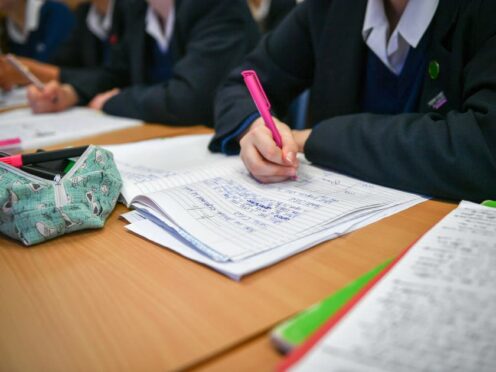
Around three in 10 children in London missed out on a place at their top choice of secondary school, according to figures collated by London Councils.
The total number of applications for places at secondary schools in the capital fell compared to last year, in line with a general picture of decreasing applications across England.
Overall, 70.5% of children who applied to start at a London secondary school this autumn received an offer from their first preference, compared to 69.78% last year, figures show.
Meanwhile the total number of applications made was 90,348, a decrease of 2.48% compared to last year.
“A recent report by London Councils predicted a drop in demand of 4.3% for secondary school places over the next four years,” the group said.
“The decrease for pupils entering Year 7 translates to 4,040 places, roughly equivalent to 134 classes.”
The group said that a reduction in places, which impacts the amount of funding a school receives, will force schools to make “further difficult decisions” to balance their budgets.
In real terms, this could mean narrowing the curriculum, offering fewer after-school clubs or reducing the number of teaching and support staff.
“In some cases, school leaders and local authority leaders will have to make difficult decisions to merge or close schools,” London Councils added.
The group said application numbers were affected by a number of reasons, including the falling birth rate across London, the effect of the UK leaving the EU, and families leaving London due to changes in “circumstances and working patterns”.
A breakdown by London borough shows significant differences in the proportion of families securing their top choice, with nearly two in five youngsters missing out in some areas.
Hammersmith and Fulham had the lowest proportion of children getting their top choice at 62.47%, and in Lewisham just 63.24% secured their first preference.
Barking and Dagenham had the highest proportion of first preferences at 82.47%, followed by City of London where 77.78% secured their preferred school.
Ian Edwards, executive member for children and young people at London Councils, said: “It is positive that once again the overwhelming majority of London’s children have an offer from one of their preferred schools.
“Boroughs have worked diligently with schools to ensure there are sufficient places to meet the demand for school places across the capital, particularly in the context of falling school rolls and the impact this is having on some schools.”
He added: “London’s population has always ebbed and flowed, so it is likely that the birth rate will pick up in due course. However, it is difficult to predict when and if this will happen, so local authorities will have to work closely with communities, schools and other local services in the meantime to ensure that we don’t lose vital assets, such as schools, that we may need in the future.
“We remain keen to work with Government to respond to pressures surrounding secondary school places, ensuring that all London pupils have the best start in life.”

Enjoy the convenience of having The Sunday Post delivered as a digital ePaper straight to your smartphone, tablet or computer.
Subscribe for only £5.49 a month and enjoy all the benefits of the printed paper as a digital replica.
Subscribe